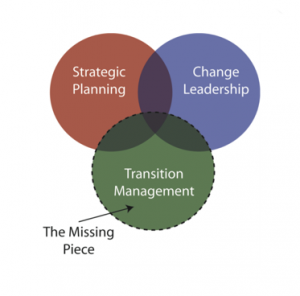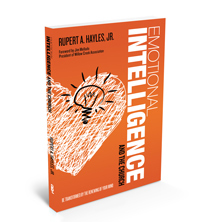Executive and Team Coaching
Simply speaking, we help maximize the effectiveness of individuals and organizations by helping them improve their ability to lead, work together, identify and develop those with leadership abilities. To accomplish this goal we work with top management to assess and establish the appropriate management structure and staffing to meet projected client/customer needs. Once identified, we can introduce team building and individual skill development, enabling the team and individual contributors to meet those needs. The CED offers support, encouragement and structure to develop strategies for success. Coaching specialties include:
Individual coaching – Designed for an organization’s director or executive director. This type of leadership coaching enhances the quality of leadership of an individual, ultimately enhancing the workings of the entire organization.
Group coaching – Designed to address executive staff or boards of directors in a variety of areas.
Organizational coaching – Works to support all levels from executives to team members to improve efficiency in the organization.
Diversity coaching – Coaching can be tailored to address individual leaders, executives or staff. This specialized coaching is designed to educate and create awareness about diversity and inclusion in an organization. Learn how to move past tolerance to appreciate, value, and make the most of cultural differences in your environment.
Executive Performance Coaching – is a professional process that links individual effectiveness to organizational performance. It is a strategic tool that helps organizations attract and retain top talent, enables executive teams to improve leadership performance and employee productivity, and supports senior executives responsible for making crucial business decisions and achieving outcomes. It also serves as an insurance policy to minimize the risks of organizational change. Our services include:
Competitive Advantage Coaching
Stretch Assignment Coaching
Coaching High Potential Individuals
Coaching Performance Issues – Executive Derailment Turnaround
Developing Leadership Skills
Team Development Coaching – is a process that enables members of a team to work better together. As pressures for higher performance increase, the stresses and conflicts among team members tend to reflect a corresponding increase. Team Development Coaching helps team members navigate these predictable conflicts more effectively while developing a more efficient and highly effective team. The TESI (Team Emotional and Social Intelligence) instruments will be used to spearhead and drive this effort.
Transition Management
The acquisition process is a set of processes for managing change. A manager already understands that all businesses are continually changing to maintain and improve their competitive position and profit performance. The role of manager includes the responsibility for initiating change and ensuring that the changes are managed and implemented in a timely and effective manner. In the acquisition process, managers are likely to confront more changes than they are accustomed to.

Following mergers and acquisitions, employee-related issues principally stem from the cultural differences between the two organizations. The corporate culture is deeply rooted in an organization; thus, changing that culture can be difficult. The relationship between the managers and the corporate culture has an impact on the organization and affects the organization’s ability to achieve its objectives. The factors that define an organization’s culture are the degree of hierarchy, degree of urgency, people/task orientation, functional orientation, institutional personality issues, and values.
The new work environment will be complex, but successful managers have the ability to shift gears and move from situation to situation to meet the demands of the organization. A key difference between a successful and an unsuccessful manager in a newly acquired organization is the manager’s ability and skills to adapt to the workplace after the acquisition. A successful manager will set the tone for the successful completion of the organization’s new goals and objectives. He or she will understand that every day is different and changes are constant. In contrast, an unsuccessful manager will want and work to maintain as few changes as possible after the acquisition.
Identifying an appropriate assessment and development method relies on the degree to which one may rely on the method, which depends on whether the particular tool is supported by solid social science and produces the desired outcomes. After all, we live in a world of complex human behavior, and we should always be on guard against doing harm.
Many instruments are proclaimed the “be-all end-all,” or universally applicable to all needs, yet these claims can rarely be proven beyond anecdotal means, and, intuitively, we should know to question such bold statements. Conversely, there are many valid and reliable tools and methodologies that, when applied to a development challenge for which they are not intended, should be considered equally inappropriate.
At the end of the training process, the organization should gain the following:
- An understanding of the post-merger realities
- Training of Senior Management on the differences between Change Management and Transition Management
- Training of Senior Management in preparation for guiding associates through the transition
- Training for individuals on the processes and steps during the transition
- Utilization of the William Bridges Transition Framework to guide the individual to increase the current work performance
- Benefits including the above deliverables and (1) a thorough understanding of the leadership impact of the transition on the individual’s team, extending to the individual’s personal life and family, (2) the creation of a development plan to grow the individual from his or her current assessed state to some agreed on future state
- Development of an appropriate communication plan
- Alignment of the Change Management Plan with the Transition Management Plan
Burnout Management
Burnout is more than feeling blue. It is a chronic state of being out of sync at work, and, if unaddressed, it can develop into a significant problem in our daily and work lives. As defined by Mind Garden, Inc., burnout is lost energy, lost enthusiasm, and lost confidence.
Burnout leads to a state of being completely overwhelmed, stressed, and exhausted. When someone is hired, he or she is in a state of euphoria over this great opportunity, but over time, with the demands of work and service, there will be a downward trend, as the level of resources falls and enthusiasm takes on a secondary role.
The key to addressing burnout is understanding oneself. The individual must also fully comprehend that one cannot push oneself beyond unattainable limits. Therefore, it is important to understand the different segments of who we are, that is, in body, soul, and spirit.
Once we gain a clear understanding of who we are, we must look at burnout from the context of the Maslach Burnout Inventory (MBI) and the Areas of Worklife Survey (AWS). The MBI measures three distinct areas: Exhaustion, Cynicism, and Professional Efficacy, while the AWS focuses on key areas of our lives that include, but are not limited to, Workload, Control, Reward, Community, Fairness, and Values.
At the end of the training process, the organization/individual should understand the burnout process and the keys to right “the ship” in terms of planning for and living a healthy life. This should include the following:
- Review
- Training of individuals in understanding the soul
- Training and understanding what Burnout is
- Understanding Performance Orientation
- Understanding the Symptoms of Burnout
- Defining and integrating the Leadership Styles
- Reviewing the Individual Burnout Report
- Reviewing the Group Burnout Report
- Reviewing General Norms:
- Exhaustion
- Cynicism
- Professional Efficacy
- Developing Action Plans concerning the following:
- Workload
- Control
- Reward
- Community
- Fairness
- Values






